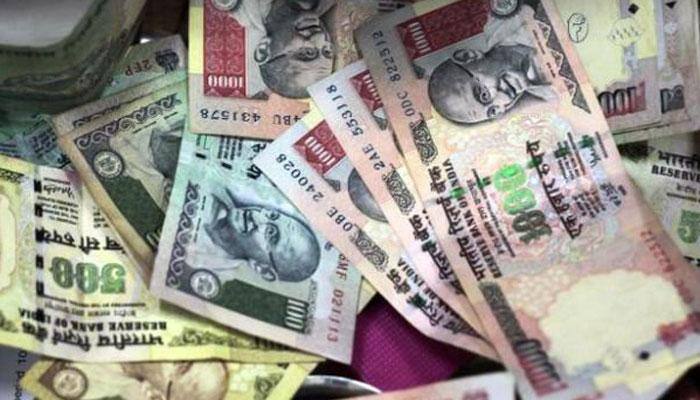New Delhi: The Narendra Modi government's bold and unprecedented decision to ban old currency notes high denomination will go a long way in the country's collective fight against black money, corruption and hoarding.
The BJP-led NDA government, which has taken a lot of pain and faced intense criticism from several quarters for its decision to demonetise old currency notes of Rs 500 and Rs 1,000, has done this with high expectations that the move will payoff in the long run.
However, in order to understand the likely impact of the move on the economy, here are some interesting facts from CLSA.
India has amongst the highest level of currencies in circulation at 12.1% of GDP. Cash on hand is an estimated at around 3.2% of household assets, higher than investment in equities, or roughly around $ 220 billion. Of this cash, 87% is in the form of Rs 500 and Rs 1,000 notes or roughly Rs 14 lakh crore ($190 billion).
A significant portion of the household cash on hand is generated by economic transactions that are not reported to tax authorities or generated through corruption, says the report. Scrapping the higher denomination money would either result in these being brought into the system or the money just disappearing.
If the money disappears, as some hoarders would not like to be seen with their cash pile, the economy will not benefit. On the other hand if the money finds its way in the economy it could have a meaningful impact.
We look at five likely impacts on the economy if a substantial portion of the cash is either reported or is consumed in the economy.
1) Tax: The central government, which has earlier opened a voluntary disclosure window for people with unaccounted money, has now closed it and announced that henceforth it will will keep a close watch on deposits over Rs 2 lakh in cash. This would mean increased tax net, higher tax collection and a better tax to GDP ratio. According to a report by Philips Capital, the extent of parallel economy, which was 23.2% of GDP, is now around 25-30% of GDP. As the money gets accounted and more taxes are collected, government might be tempted to reduce tax rates going forward.
2) Interest rates: One of the biggest impacts of demonetisation would be high value transactions, especially land and gold. This would result in lower inflation, tempting the central bank to reduce interest rates. But the bigger impact on interest rates will be the liquidity with which banks will be flushed. Banks would benefit with higher current account savings account growth as a part of the $ 190 billion cash pile gets deposited with them. Higher deposit growth and continuing weak credit growth would create opportunities for lending rate cuts and investment activities to pick-up.
3) Liquidity: Movement of goods and money will be hit in the short. A Bank of America Merrill Lynch note says that wholesale channel forms over 40% of the sales for the Indian consumer firms. This channel works mainly on cash transactions and will likely witness liquidity constraints in the near term. This could disrupt the supply chain and impact growth in the December quarter. The report further adds that consumer firms typically provide tight credit terms (<7 days) to the distributors, who in turn provide credit to the wholesalers/ outlets on their own accounts. Due to overall tightening of the cash-liquidity in the supply chain, consumer firms may be forced to offer easier credit terms to the distributors in the near term. As a result we expect an increase in their receivables in the December quarter.
4) GST: The demonetisation move comes at a time when the country is heading towards a new tax regime with the implementation of GST. Demonetisation would increase the tax net and along with GST result in reduction of black money generation. Along with GST, demonetisation will lead to a higher tax/GDP ratio, says CLSA.
5) Financial assets: As money lying idle comes in the main economy it would move to higher yielding and liquid assets. Money is likely to move to financial assets from gold, precious metals, real estate and plain cash. Equities might reflect the panic in the economy in the short term, but the move is will be beneficial in the long run say most of the broker’s report and expert comments.
(Based on CLSA data)
















